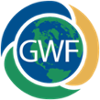Developing ‘Omic’ and Chemical Fingerprinting Methodologies
Using Ultrahigh-Resolution Mass Spectrometry for Geochemistry and Healthy Waters
PI: Paul Jones, University of Saskatchewan
Co-I's: John Giesy; Markus Hecker, University of Saskatchewan
‘Omics’ approaches such as proteomics, lipidomics and metabolomics along with chemical fingerprinting technologies can be used as powerful tools to monitor the current status and to predict future trends in ecosystem structure and function. As an example, organisms living in Canada’s north and at high altitudes, must annually adjust their metabolisms and the lipid components in their cellular membranes to adapt to changing temperatures. Any alterations in the magnitudes or timing of changes in temperature or sources of food could have severe, even catastrophic, negative effects on individual organisms, and ultimately on whole ecosystems and the services they provide to humans. Also, nutrient cycling that controls eutrophication and associated harmful algal blooms (HABs) is controlled, in part, by organic forms of phosphorus and nitrogen and dissolved organic matter that can be better characterized by UHR-MS.
Natural constituents of surface waters, such as humic and fulvic acids, proteins and amino acids are important for regulating geochemical processes, but are complex and to date have not been well characterized. Also, toxic products of HABs are complex and have been difficult to characterize, but the newly established UHR-MS systems will allow for much better characterization of these important compounds. The project develops and validates methods that take full advantage of the new state-of-the-art equipment, while also providing support and training for other on-going GWF projects and personnel. The longer-term goal is to work with researchers to apply these techniques to assess aquatic resources in support of end-user needs and priorities of the GWF platform.
